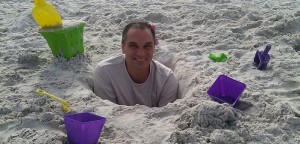January 31, 1709, is a day not many people know much about, but the events that took place became the basis for a novel everyone knows.
The true story is about Alexander Selkirk, a Scottish sailor who was rescued on that date after being stranded for four years on an island in the Pacific.
Alexander Selkirk’s real-life adventure inspired the story of Robinson Crusoe.
Robinson Crusoe, considered by many to be the first English novel, is the tale of an Englishman marooned on a deserted island for nearly three decades. During his long exile, he constructs a fortress, fights off cannibals, saves the life of a native he calls Friday, and eventually gets rescued.
Now here’s where truth becomes stranger than fiction …
Daniel Defoe, who wrote Robinson Crusoe, purposely left his name off the book when he first published it in 1719. Why? Because he presented the book as a true account of real events recorded by a real man named Crusoe.
While readers immediately doubted the story was true, they didn’t seem to mind … even after critic Charles Gildon published a piece showing that Crusoe was made up and the novel’s episodes were fiction.
The reason readers were so accepting of this hoax is that there was no clear distinction between fiction and nonfiction at that time. The novel was just emerging as a new art form and Defoe was simply experimenting with it.
Modern day critics contend that “Crusoe” remains an enduring classic because Defoe wrote a story that’s fiction, yet feels as if it’s nonfiction.
Here are some other interesting tidbits about Defoe and “Crusoe”:
- Some historians believe Defoe used the name of a former classmate, Timothy Cruso, for his fictional hero.
- Defoe wrote two sequels to “Crusoe”: The Farther Adventures of Robinson Crusoe (1719) and Serious Reflections of Robinson Crusoe (1720).
- The first sequel, “Farther Adventures,” has Crusoe returning to his island after his wife’s death. He later travels to Madagascar, the Far East, and Siberia after the death of Man Friday.
- Defoe was a prolific writer who wrote more than 500 books, pamphlets, and journals, used roughly 200 different pseudonyms throughout his writing career, and was a pioneer of economic journalism.
- While Defoe based part of his tale on the story of Scottish castaway Selkirk, historian Tim Severin contends the real Robinson Crusoe figure was Henry Pitman, a castaway who escaped from a penal colony, was shipwrecked, and stranded on a deserted Caribbean island — the same location as Crusoe’s island.
- The “Crusoe” story has inspired many knockoffs, including J. D. Wyss’ The Swiss Family Robinson, the TV series (later a film) Lost in Space, Tom Hanks’ film Cast Away, R. M. Ballantyne’s The Coral Island, and William Golding’s classic Lord of the Flies.
- The deserted island where Selkirk was marooned was not named after the Scottish castaway. Rather, it was named Robinson Crusoe Island because it supposedly inspired the writing of Robinson Crusoe.
Nearly 300 years after his death, Defoe continues to be recognized. Mont Blanc, the German manufacturer of quality pens, honored the author in 2014 by issuing the Writers Edition Daniel Defoe fountain pen. Excluding tax and shipping, it’s a steal at $1,100!






